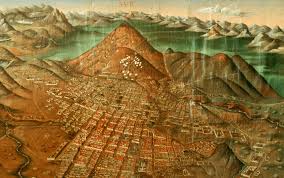The 16th century marked the dawn of a transformative era for the global economy, fueled by the discovery of massive silver deposits in the Americas. The Spanish conquest of the New World uncovered unprecedented quantities of silver, particularly in Potosí (Bolivia) and Zacatecas (Mexico). These mines not only enriched the Spanish Empire but also reshaped global trade networks, linking continents and laying the foundation for modern globalization. The silver boom of the Americas turned the metal into the engine of empires and the lifeblood of international commerce.

The Discovery and Rise of Potosí
- Potosí, Bolivia (1545):
In 1545, a Quechua shepherd named Diego Huallpa discovered rich veins of silver in the Cerro Rico (“Rich Mountain”) of Potosí. Within a few decades, Potosí became one of the most important mining centers in the world.- Output: By the late 16th century, Potosí produced over half of the world’s silver supply.
- Impact: The city grew rapidly, becoming one of the largest and wealthiest urban centers in the Americas, with a population exceeding 150,000 at its peak.
- The “Mita” System: Indigenous laborers were conscripted under the mita system, a harsh labor draft that forced many to work in dangerous conditions in the mines.
Zacatecas: The Silver Heart of Mexico
- Zacatecas, Mexico (1546):
Shortly after Potosí, another major silver discovery was made in Zacatecas, in the northern part of modern-day Mexico.- Economic Significance: Zacatecas became a crucial hub for silver production, powering the Mexican economy and providing Spain with a steady flow of wealth.
- Cultural Influence: The wealth generated from Zacatecas helped fund the construction of churches, universities, and public works across Mexico, leaving a lasting architectural and cultural legacy.
How the Spanish Conquest Fueled the Silver Boom
- Technology and Labor:
- The Spanish introduced advanced mining techniques, including the use of the “patio process” (amalgamation with mercury) to extract silver more efficiently.
- Enslaved Africans and indigenous laborers were exploited to meet the demand for workers in the mines.
- Global Trade Networks:
- Silver mined in Potosí and Zacatecas was shipped to Spain, often via the port of Veracruz in Mexico. From there, it entered European markets or was re-exported to Asia through trade hubs like Manila in the Philippines.
- The Spanish “galleon trade” established a direct link between the Americas, Europe, and Asia, creating the first global trade network.
The Ripple Effects of the Silver Boom
- Spain’s Golden Age:
- The influx of silver turned Spain into the wealthiest and most powerful empire of the 16th and 17th centuries. Silver financed wars, colonization, and the Spanish Renaissance.
- However, Spain’s overreliance on silver led to inflation (the Price Revolution) and economic stagnation, as the empire failed to invest in sustainable industries.
- The Asian Connection:
- Much of the silver mined in the Americas flowed into China, where it was used to satisfy the Ming Dynasty’s tax reforms that required payments in silver.
- The “Silver Drain” saw silver flow eastward in exchange for luxury goods like silk, porcelain, and spices, fueling the Asian economies and further integrating the global economy.
- European Expansion:
- European powers like Portugal, England, and the Netherlands sought to compete with Spain by developing their own colonial enterprises.
- The silver boom helped finance European naval expansion and the rise of mercantilist economies.
Consequences of the Silver Boom
While the silver boom brought immense wealth to Spain and transformed global trade, it also had darker consequences:
- Exploitation and Suffering: The forced labor systems in Potosí and Zacatecas resulted in the suffering and deaths of countless indigenous and African workers.
- Environmental Damage: Extensive mining led to deforestation, soil erosion, and mercury pollution, leaving lasting environmental scars in the Americas.
- Economic Instability: Spain’s dependence on silver wealth created a “resource curse,” as the influx of wealth undermined domestic industries and left the empire vulnerable to economic collapse.
Conclusion: Silver’s Global Impact
The discovery of silver in Potosí and Zacatecas marked a turning point in global history. It linked the Americas, Europe, and Asia in an unprecedented network of trade and wealth, shaping the course of empires and economies. Yet, the silver boom was also a story of exploitation, environmental destruction, and economic imbalance. The legacy of this period remains evident in the architecture, trade patterns, and cultural history of the regions it touched.
